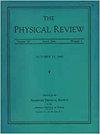Nuclear electric resonance for spatially resolved spin control via pulsed optical excitation in the UV-visible spectrum
引用次数: 0
Abstract
Nuclear electric resonance (NER) spectroscopy is currently experiencing a revival as a tool for nuclear spin-based quantum computing. Compared to magnetic or electric fields, local electron density fluctuations caused by changes in the atomic environment provide a much higher spatial resolution for the addressing of nuclear spins in qubit registers or within a single molecule. In this article we investigate the possibility of coherent spin control in atoms or molecules via nuclear quadrupole resonance from first principles. An abstract, time-dependent description is provided which entails and reflects on commonly applied approximations. This formalism is then used to propose a method we refer to as ``optical'' nuclear electric resonance (ONER). It employs pulsed optical excitations in the UV-visible light spectrum to modulate the electric field gradient at the position of a specific nucleus of interest by periodic changes of the surrounding electron density. Possible realizations and limitations of ONER for atomically resolved spin manipulation are discussed and tested on $^{9}\mathrm{Be}$ as an atomic benchmark system via electronic structure theory.在紫外可见光谱中利用脉冲光激发进行空间分辨自旋控制的核电共振
作为基于核自旋的量子计算工具,核电共振(NER)光谱学目前正在复兴。与磁场或电场相比,原子环境变化引起的局部电子密度波动为量子位寄存器或单个分子内的核自旋寻址提供了更高的空间分辨率。本文从第一性原理出发,研究了利用核四极共振控制原子或分子中相干自旋的可能性。提供了一个抽象的、与时间相关的描述,它包含并反映了通常应用的近似。然后,这种形式被用来提出一种我们称之为“光学”核电子共振(ONER)的方法。它采用紫外-可见光光谱中的脉冲光激发,通过周围电子密度的周期性变化来调制特定原子核位置的电场梯度。讨论了原子分辨自旋操作的可能实现和限制,并利用电子结构理论在$^{9}\ maththrm {Be}$作为原子基准系统上进行了测试。
本文章由计算机程序翻译,如有差异,请以英文原文为准。
求助全文
约1分钟内获得全文
求助全文

 求助内容:
求助内容: 应助结果提醒方式:
应助结果提醒方式:


